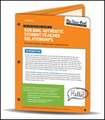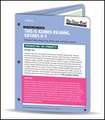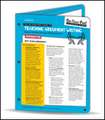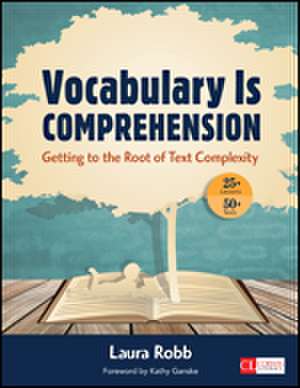Vocabulary Is Comprehension: Getting to the Root of Text Complexity: Corwin Literacy
Autor Laura J. Robben Limba Engleză Paperback – dec 2014
Din seria Corwin Literacy
-
 Preț: 285.18 lei
Preț: 285.18 lei -
 Preț: 158.08 lei
Preț: 158.08 lei -
 Preț: 278.39 lei
Preț: 278.39 lei -
 Preț: 243.82 lei
Preț: 243.82 lei -
 Preț: 244.25 lei
Preț: 244.25 lei -
 Preț: 88.42 lei
Preț: 88.42 lei -
 Preț: 273.64 lei
Preț: 273.64 lei -
 Preț: 274.70 lei
Preț: 274.70 lei -
 Preț: 157.08 lei
Preț: 157.08 lei -
 Preț: 280.29 lei
Preț: 280.29 lei -
 Preț: 284.26 lei
Preț: 284.26 lei -
 Preț: 294.79 lei
Preț: 294.79 lei -
 Preț: 281.36 lei
Preț: 281.36 lei -
![Mindsets and Moves: Strategies That Help Readers Take Charge [Grades K-8]](https://i3.books-express.ro/bs/9781506314938/mindsets-and-moves.jpg) Preț: 156.17 lei
Preț: 156.17 lei -
 Preț: 283.27 lei
Preț: 283.27 lei -
 Preț: 88.42 lei
Preț: 88.42 lei -
 Preț: 281.94 lei
Preț: 281.94 lei -
 Preț: 280.29 lei
Preț: 280.29 lei -
 Preț: 278.64 lei
Preț: 278.64 lei -
 Preț: 267.50 lei
Preț: 267.50 lei -
 Preț: 226.80 lei
Preț: 226.80 lei -
 Preț: 270.76 lei
Preț: 270.76 lei -
 Preț: 267.70 lei
Preț: 267.70 lei -
 Preț: 278.10 lei
Preț: 278.10 lei -
 Preț: 245.45 lei
Preț: 245.45 lei -
 Preț: 230.63 lei
Preț: 230.63 lei -
 Preț: 272.62 lei
Preț: 272.62 lei -
![Every Minute Matters [Grades K-5]: 40+ Activities for Literacy-Rich Classroom Transitions](https://i4.books-express.ro/bs/9781544382449/every-minute-matters-grades-k-5.jpg) Preț: 218.58 lei
Preț: 218.58 lei -
 Preț: 274.00 lei
Preț: 274.00 lei -
![Flash Feedback [Grades 6-12]: Responding to Student Writing Better and Faster – Without Burning Out](https://i4.books-express.ro/bs/9781544360492/flash-feedback-grades-6-12.jpg) Preț: 232.71 lei
Preț: 232.71 lei -
 Preț: 88.67 lei
Preț: 88.67 lei -
 Preț: 180.48 lei
Preț: 180.48 lei -
 Preț: 273.44 lei
Preț: 273.44 lei -
 Preț: 173.02 lei
Preț: 173.02 lei -
 Preț: 88.67 lei
Preț: 88.67 lei -
 Preț: 236.11 lei
Preț: 236.11 lei -
 Preț: 236.11 lei
Preț: 236.11 lei -
 Preț: 256.83 lei
Preț: 256.83 lei -
 Preț: 291.04 lei
Preț: 291.04 lei -
 Preț: 288.67 lei
Preț: 288.67 lei -
 Preț: 273.44 lei
Preț: 273.44 lei -
 Preț: 184.56 lei
Preț: 184.56 lei -
 Preț: 174.52 lei
Preț: 174.52 lei -
 Preț: 275.92 lei
Preț: 275.92 lei -
 Preț: 140.61 lei
Preț: 140.61 lei -
 Preț: 278.10 lei
Preț: 278.10 lei -
![Comprehension [Grades K-12]: The Skill, Will, and Thrill of Reading](https://i3.books-express.ro/bs/9781071812839/comprehension-grades-k-12.jpg) Preț: 287.79 lei
Preț: 287.79 lei -
 Preț: 247.10 lei
Preț: 247.10 lei -
 Preț: 277.50 lei
Preț: 277.50 lei -
 Preț: 273.44 lei
Preț: 273.44 lei
Preț: 154.99 lei
Preț vechi: 209.30 lei
-26% Nou
Puncte Express: 232
Preț estimativ în valută:
29.66€ • 30.79$ • 24.73£
29.66€ • 30.79$ • 24.73£
Carte indisponibilă temporar
Doresc să fiu notificat când acest titlu va fi disponibil:
Se trimite...
Preluare comenzi: 021 569.72.76
Specificații
ISBN-13: 9781483345802
ISBN-10: 1483345807
Pagini: 200
Ilustrații: illustrations
Dimensiuni: 216 x 279 x 10 mm
Greutate: 0.56 kg
Ediția:1
Editura: SAGE Publications
Colecția Corwin
Seria Corwin Literacy
Locul publicării:Thousand Oaks, United States
ISBN-10: 1483345807
Pagini: 200
Ilustrații: illustrations
Dimensiuni: 216 x 279 x 10 mm
Greutate: 0.56 kg
Ediția:1
Editura: SAGE Publications
Colecția Corwin
Seria Corwin Literacy
Locul publicării:Thousand Oaks, United States
Recenzii
“Although the importance of vocabulary knowledge for reading and learning is widely recognized, it isn’t every day that a book makes the connection between word savvy and engaged text reading so transparent and lively. . . . Laura Robb’s Vocabulary Is Comprehension is truly a book for the times and for the time-conscious middle-grades teacher. It’s one I look forward to having in my toolbox.”
“Laura Robb has this remarkable way of lassoing the galloping, impossible-to-meet mandates out there and wrestling them to the ground so they actually work in classrooms. In Vocabulary Is Comprehension, she shows teachers how to teach systematic, daily vocabulary in the context of authentic reading and a vital curriculum . . . making us grateful once again for Laura Robb and her efforts to help us all be better teachers.”
“The research is clear: the size of a student’s vocabulary at the end of twelfth grade is not only a strong indicator of whether college is attainable, but also a predictor of future income and success. Fortunately, Vocabulary Is Comprehension provides teachers with effective and practical ideas on how to strengthen our students’ knowledge of words. This is an essential book for helping students overcome word deficit and attain the greater freedom and power that comes with possessing a strong and sophisticated vocabulary.”
“Opening Laura Robb’s book is like unwrapping a gift box where you discover many other wondrous presents inside. Expertly aligned to the Common Core and to research-based practices, Laura provides teachers with what they’ve long needed: a simple set of principles for understanding all of the individual components of vocabulary along with practical tools for teaching vocabulary. . . . Lots of lessons. Lots of texts. Lots of reproducibles. Lots to love!”
“Laura Robb hasn’t just shown the best means for employing the most effective instructional strategy for improving word knowledge, she has also thought of every dimension of masterful classroom management to meet the needs of every child along the way. . . .This is a book that will have teachers excited for tomorrow’s vocabulary instruction and marveling at how fast students grow in their reading ability when they have tools to employ rather than just rote memorization.”
“Laura Robb has this remarkable way of lassoing the galloping, impossible-to-meet mandates out there and wrestling them to the ground so they actually work in classrooms. In Vocabulary Is Comprehension, she shows teachers how to teach systematic, daily vocabulary in the context of authentic reading and a vital curriculum . . . making us grateful once again for Laura Robb and her efforts to help us all be better teachers.”
“The research is clear: the size of a student’s vocabulary at the end of twelfth grade is not only a strong indicator of whether college is attainable, but also a predictor of future income and success. Fortunately, Vocabulary Is Comprehension provides teachers with effective and practical ideas on how to strengthen our students’ knowledge of words. This is an essential book for helping students overcome word deficit and attain the greater freedom and power that comes with possessing a strong and sophisticated vocabulary.”
“Opening Laura Robb’s book is like unwrapping a gift box where you discover many other wondrous presents inside. Expertly aligned to the Common Core and to research-based practices, Laura provides teachers with what they’ve long needed: a simple set of principles for understanding all of the individual components of vocabulary along with practical tools for teaching vocabulary. . . . Lots of lessons. Lots of texts. Lots of reproducibles. Lots to love!”
“Laura Robb hasn’t just shown the best means for employing the most effective instructional strategy for improving word knowledge, she has also thought of every dimension of masterful classroom management to meet the needs of every child along the way. . . .This is a book that will have teachers excited for tomorrow’s vocabulary instruction and marveling at how fast students grow in their reading ability when they have tools to employ rather than just rote memorization.”
Cuprins
Foreword by Kathy Ganske
Acknowledgments
Chapter 1. How the Common Core Has Changed the Rules of the Game Forever (Even If the Standards Go Away)
Big Ambition: Vocabulary in the Context of All the ELA Standards
Vocabulary in the Context of Complex Text Reading
Research Highlights
The Lesson Structure: 10 to 15 Minutes a Day
The Big 10 Approach to Reading Words Closely
The Big 10 and the Common Core Vocabulary Standards
Collaborate and Learn
Chapter 2. Ten Short Lessons for the Big 10
Which Words Do I Teach?
Laying Out the Lessons for the Big 10
Elements of the Lesson
Lesson 1: Understanding Descriptive Words to Visualize
Lesson 2: Decode and Define Multisyllable Words
Lesson 3: Understanding Personification
Lesson 4: Write to Show Understanding of Words
Lesson 5: Synonyms, Antonyms, and Multiple Meanings
Lesson 6: Connecting Words to a Text's Concepts
Lesson 7: Understanding Denotative and Connotative Meanings
Lesson 8: Showing Word Knowledge via Twitter
Lesson 9: Four Words to Respond to Texts
Lesson 10: Multiple Forms, Multiple Meanings
Collaborate and Learn
Chapter 3. Figurative Language
Helping Students Not to Be Cowed by Figurative Language
Guidelines for Reading Poetry
Lesson 1: Alliteration
Lesson 2: Metaphor
Lesson 3: Onomatopoeia
Lesson 4: Repetition
Lesson 5: Simile
Lesson 6: Symbols and Symbolism
Lesson 7: Idioms
Using Discussions to Interpret Figurative Language
Three Reproducibles for Discussing and Writing About Poems
Discussions on Class Blogs
Collaborate and Learn
Chapter 4. Getting to the Root of Words
What the Common Core State Standards Have to Say
Review Lessons on Prefixes and Suffixes
Lesson 1: Prefixes
Lesson 2: Suffixes
A Five-Day Routine for Teaching Roots
Lesson 3: Expand Vocabulary With Roots, Prefixes, and Suffixes
Lesson 4: Make Words With Prefixes, Suffixes, and Roots
How to Link the Lessons to Students' Reading
More Strategies That Use Roots, Prefixes, and Suffixes
Lesson 5: Prefix Brainstorm
Lesson 6: Denotation-Connotation Map
Collaborate and Learn
Chapter 5. General Academic and Domain-Specific Vocabulary
The CCR Anchor Standards for Reading
Quick Recap: How the Lessons in This Book Address the Anchor Standards
Four Categories of Academic Vocabulary
The Best Use of Word Lists
Why General Academic Vocabulary Is Key
Basic Elements of General Academic Vocabulary Lessons
Lessons for Teaching General Academic Words
Lesson 1: Rate Your Word Knowledge
Lesson 2: ABC List and Link
Lesson 3: Concept Map and Writing
Lesson 4: Words in the World
Lesson 5: Making Analogies on a Class Wiki or Blog
Lesson 6: Tweeting for Word Learning
Collaborate and Learn
Chapter 6. Assessing Vocabulary
So How Are They Reading Complex Texts?
Informative Assessment and Responsive Teaching
Why Final Tests Are Problematic
Gathering Data Throughout the Lessons
Making Instructional Decisions and Modifications
Introducing Lessons: The First Day
Practicing the Lessons: Second and Possibly Third Days
Applying the Lessons: Completing Written Work
Self-Evaluation
How to Scaffold and Reteach
Collaborate and Learn
Concluding Thoughts on Vocabulary Instruction
Ten Ways Students Can Expand Their Vocabularies
References
Index
Acknowledgments
Chapter 1. How the Common Core Has Changed the Rules of the Game Forever (Even If the Standards Go Away)
Big Ambition: Vocabulary in the Context of All the ELA Standards
Vocabulary in the Context of Complex Text Reading
Research Highlights
The Lesson Structure: 10 to 15 Minutes a Day
The Big 10 Approach to Reading Words Closely
The Big 10 and the Common Core Vocabulary Standards
Collaborate and Learn
Chapter 2. Ten Short Lessons for the Big 10
Which Words Do I Teach?
Laying Out the Lessons for the Big 10
Elements of the Lesson
Lesson 1: Understanding Descriptive Words to Visualize
Lesson 2: Decode and Define Multisyllable Words
Lesson 3: Understanding Personification
Lesson 4: Write to Show Understanding of Words
Lesson 5: Synonyms, Antonyms, and Multiple Meanings
Lesson 6: Connecting Words to a Text's Concepts
Lesson 7: Understanding Denotative and Connotative Meanings
Lesson 8: Showing Word Knowledge via Twitter
Lesson 9: Four Words to Respond to Texts
Lesson 10: Multiple Forms, Multiple Meanings
Collaborate and Learn
Chapter 3. Figurative Language
Helping Students Not to Be Cowed by Figurative Language
Guidelines for Reading Poetry
Lesson 1: Alliteration
Lesson 2: Metaphor
Lesson 3: Onomatopoeia
Lesson 4: Repetition
Lesson 5: Simile
Lesson 6: Symbols and Symbolism
Lesson 7: Idioms
Using Discussions to Interpret Figurative Language
Three Reproducibles for Discussing and Writing About Poems
Discussions on Class Blogs
Collaborate and Learn
Chapter 4. Getting to the Root of Words
What the Common Core State Standards Have to Say
Review Lessons on Prefixes and Suffixes
Lesson 1: Prefixes
Lesson 2: Suffixes
A Five-Day Routine for Teaching Roots
Lesson 3: Expand Vocabulary With Roots, Prefixes, and Suffixes
Lesson 4: Make Words With Prefixes, Suffixes, and Roots
How to Link the Lessons to Students' Reading
More Strategies That Use Roots, Prefixes, and Suffixes
Lesson 5: Prefix Brainstorm
Lesson 6: Denotation-Connotation Map
Collaborate and Learn
Chapter 5. General Academic and Domain-Specific Vocabulary
The CCR Anchor Standards for Reading
Quick Recap: How the Lessons in This Book Address the Anchor Standards
Four Categories of Academic Vocabulary
The Best Use of Word Lists
Why General Academic Vocabulary Is Key
Basic Elements of General Academic Vocabulary Lessons
Lessons for Teaching General Academic Words
Lesson 1: Rate Your Word Knowledge
Lesson 2: ABC List and Link
Lesson 3: Concept Map and Writing
Lesson 4: Words in the World
Lesson 5: Making Analogies on a Class Wiki or Blog
Lesson 6: Tweeting for Word Learning
Collaborate and Learn
Chapter 6. Assessing Vocabulary
So How Are They Reading Complex Texts?
Informative Assessment and Responsive Teaching
Why Final Tests Are Problematic
Gathering Data Throughout the Lessons
Making Instructional Decisions and Modifications
Introducing Lessons: The First Day
Practicing the Lessons: Second and Possibly Third Days
Applying the Lessons: Completing Written Work
Self-Evaluation
How to Scaffold and Reteach
Collaborate and Learn
Concluding Thoughts on Vocabulary Instruction
Ten Ways Students Can Expand Their Vocabularies
References
Index
Notă biografică
Descriere
Provides teachers with a way to be systematic with vocabulary instruction so that students gain the multiple exposures to words they need in order to acquire them.
